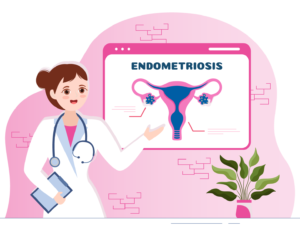Endometriosis, a complex and often painful medical condition affecting women of reproductive age, manifests when tissue resembling the uterine lining, or endometrium, grows outside the uterus. This aberrant tissue development can lead to a spectrum of symptoms, ranging from pelvic pain and menstrual irregularities to digestive issues. Particularly significant is the intricate interplay between endometriosis and infertility, a concern shared by many women diagnosed with this condition. The presence of endometrial implants outside the uterus can disrupt normal reproductive functions, impacting fertility through mechanisms such as distorted pelvic anatomy, inflammation, and compromised egg quality. Understanding the nuanced relationship between endometriosis and infertility is crucial for both medical practitioners and individuals grappling with these challenges, as it informs the development of tailored treatment plans and empowers women on their journey to conception.
Endometriosis is a complex condition with multiple factors contributing to its development. Some of them are:

Diagnosing endometriosis can be tricky since its symptoms may resemble those of other conditions. Some of the ways are:

In conclusion, the journey through endometriosis encompasses far more than a medical diagnosis; it is a testament to resilience, strength, and the pursuit of holistic well-being. This intricate condition, affecting physical, emotional, and reproductive aspects of one's life, prompts a nuanced approach to treatment. From medical interventions to lifestyle adjustments and fertility considerations, the path forward is as diverse as the individuals it touches. Yet, it is the shared narratives, the open conversations, and the collective advocacy that propel progress in the understanding and management of endometriosis. As we navigate this terrain, it becomes evident that beyond medical advancements, it is the power of community, awareness, and individual tenacity that shapes the narrative. Endometriosis challenges us to reframe discussions around women's health, fostering a future where compassion, research, and unwavering support coalesce to redefine the experience of those affected by this complex condition.
